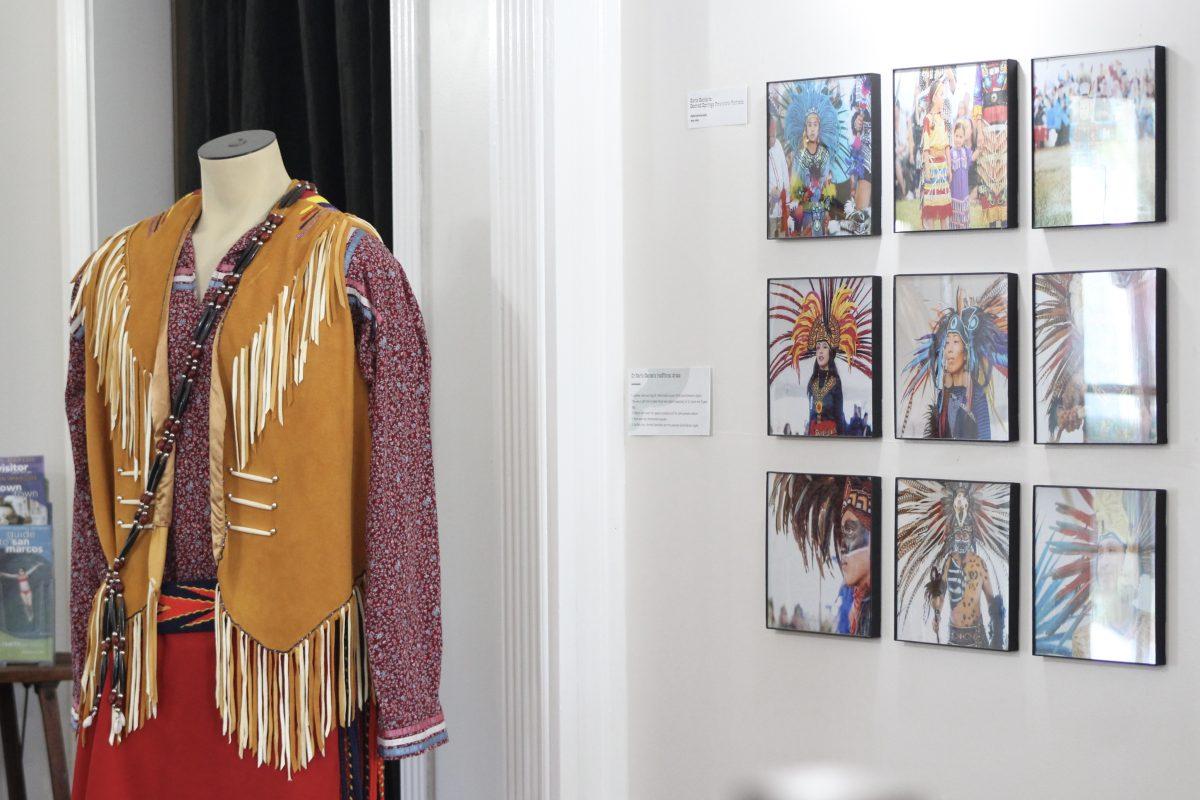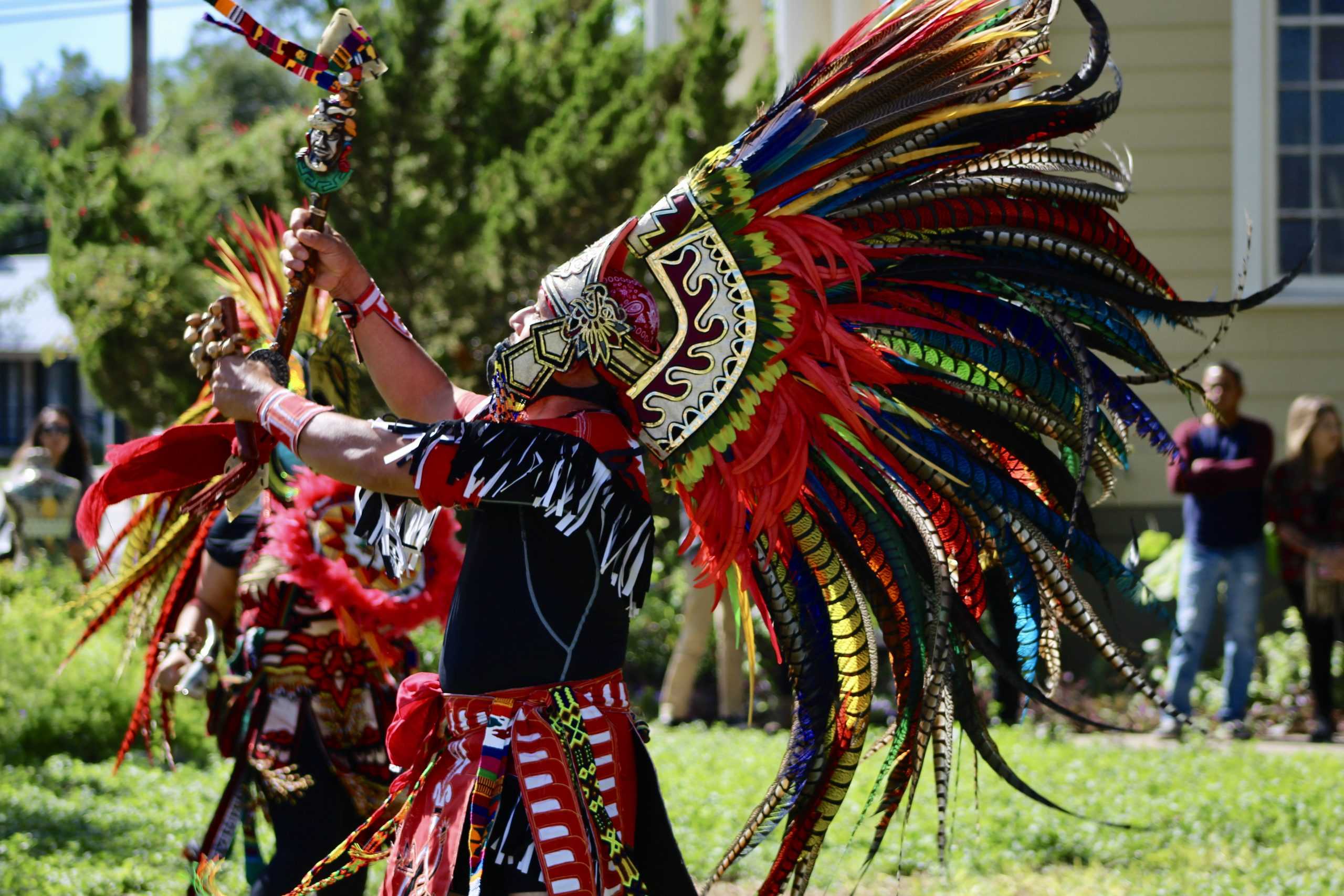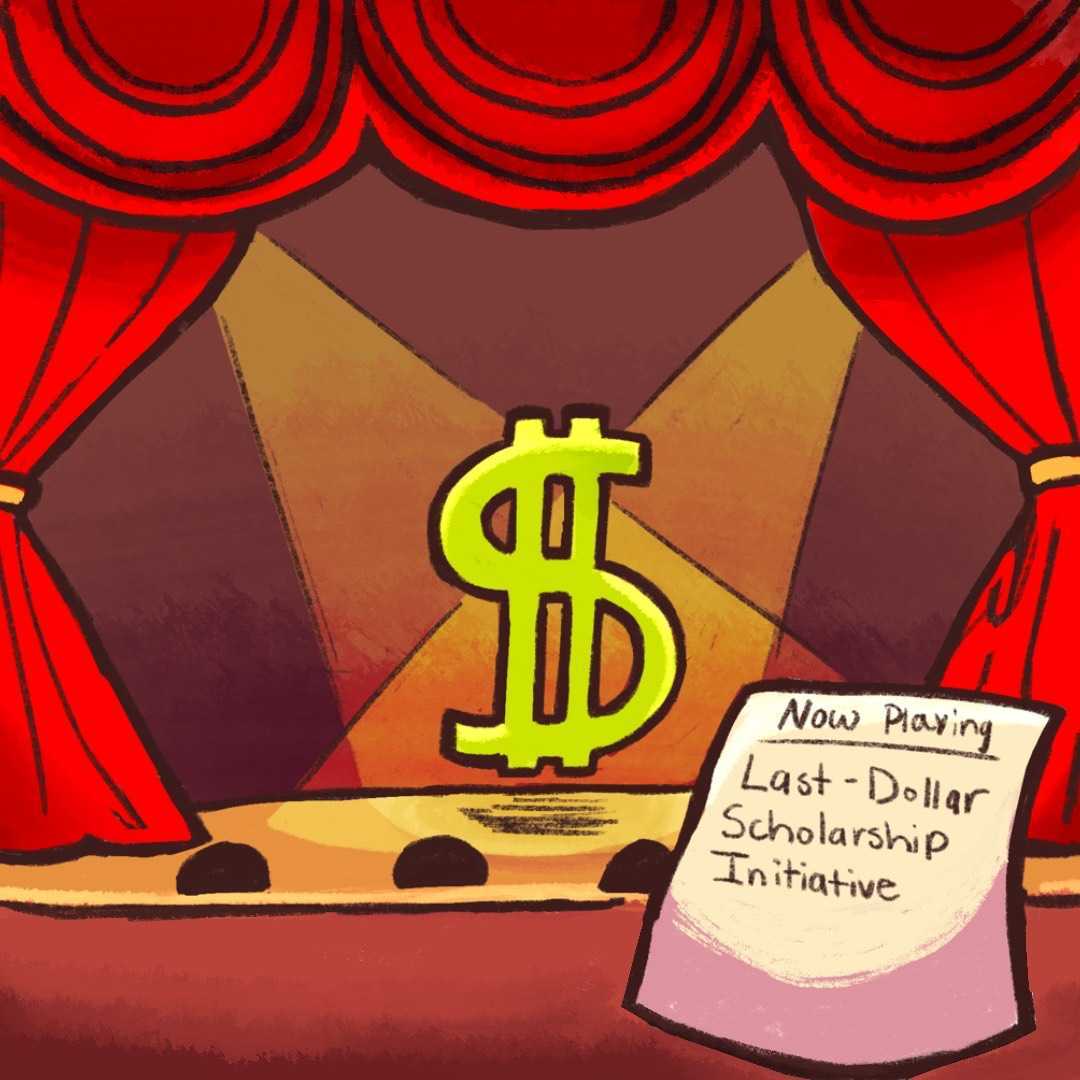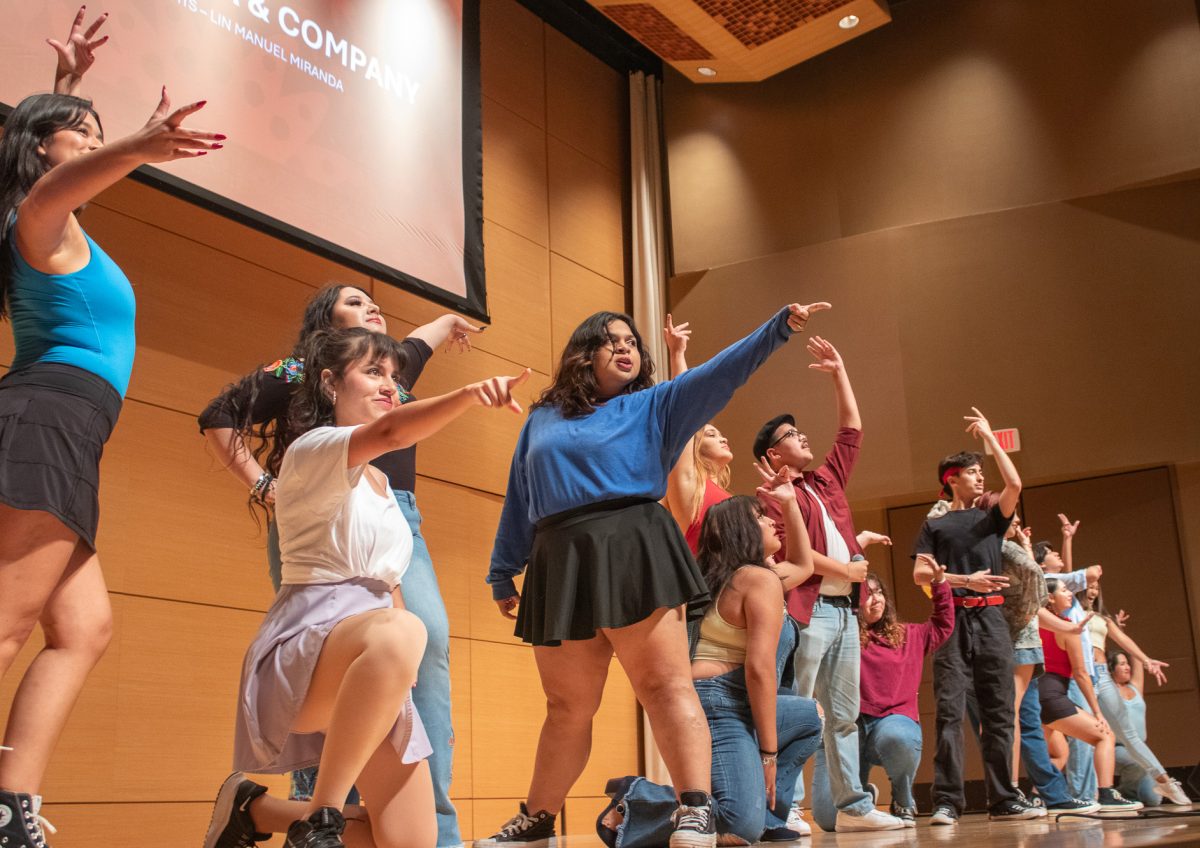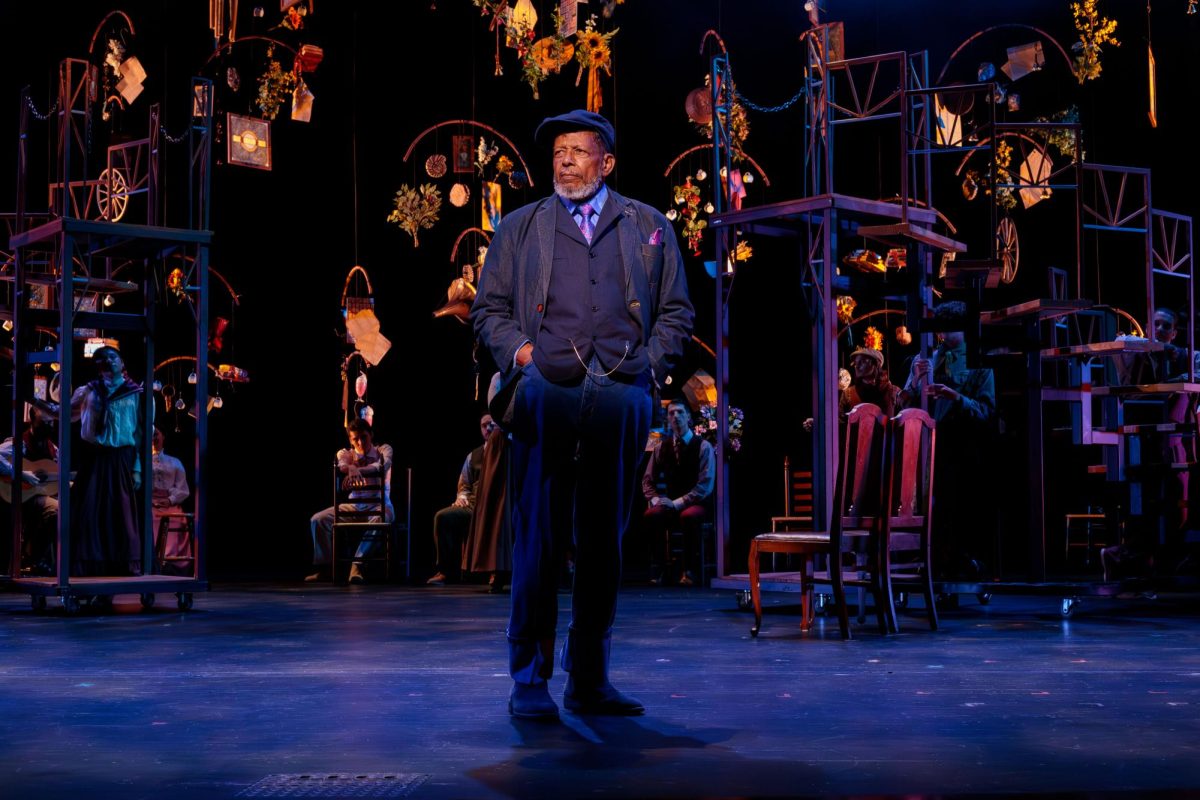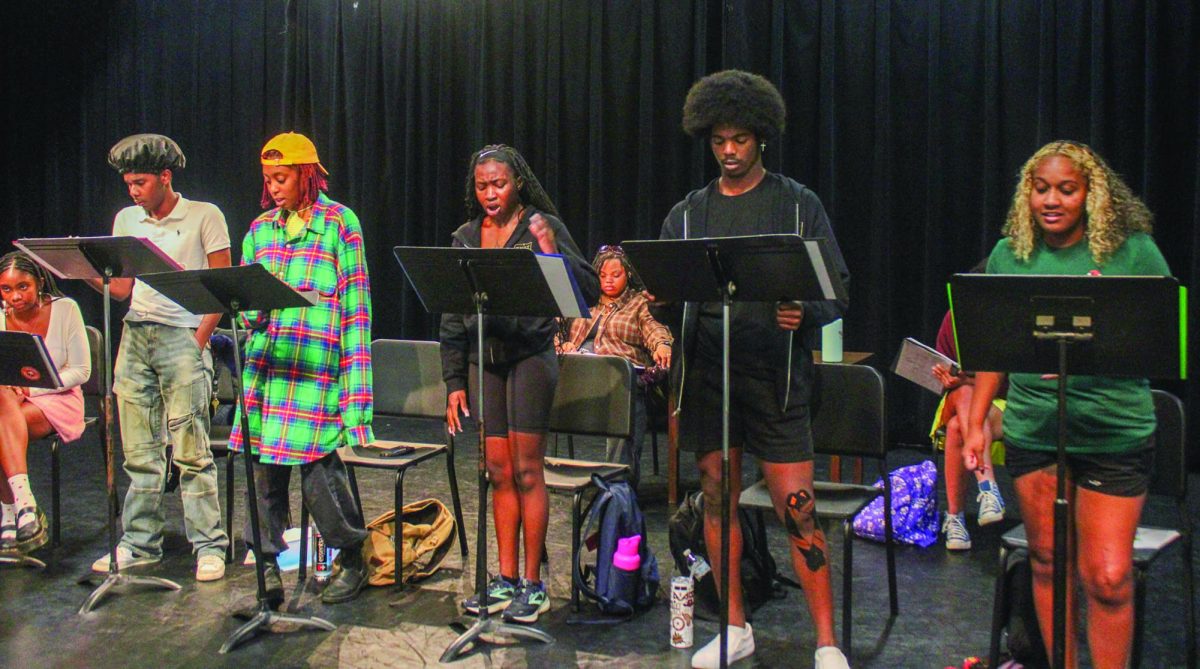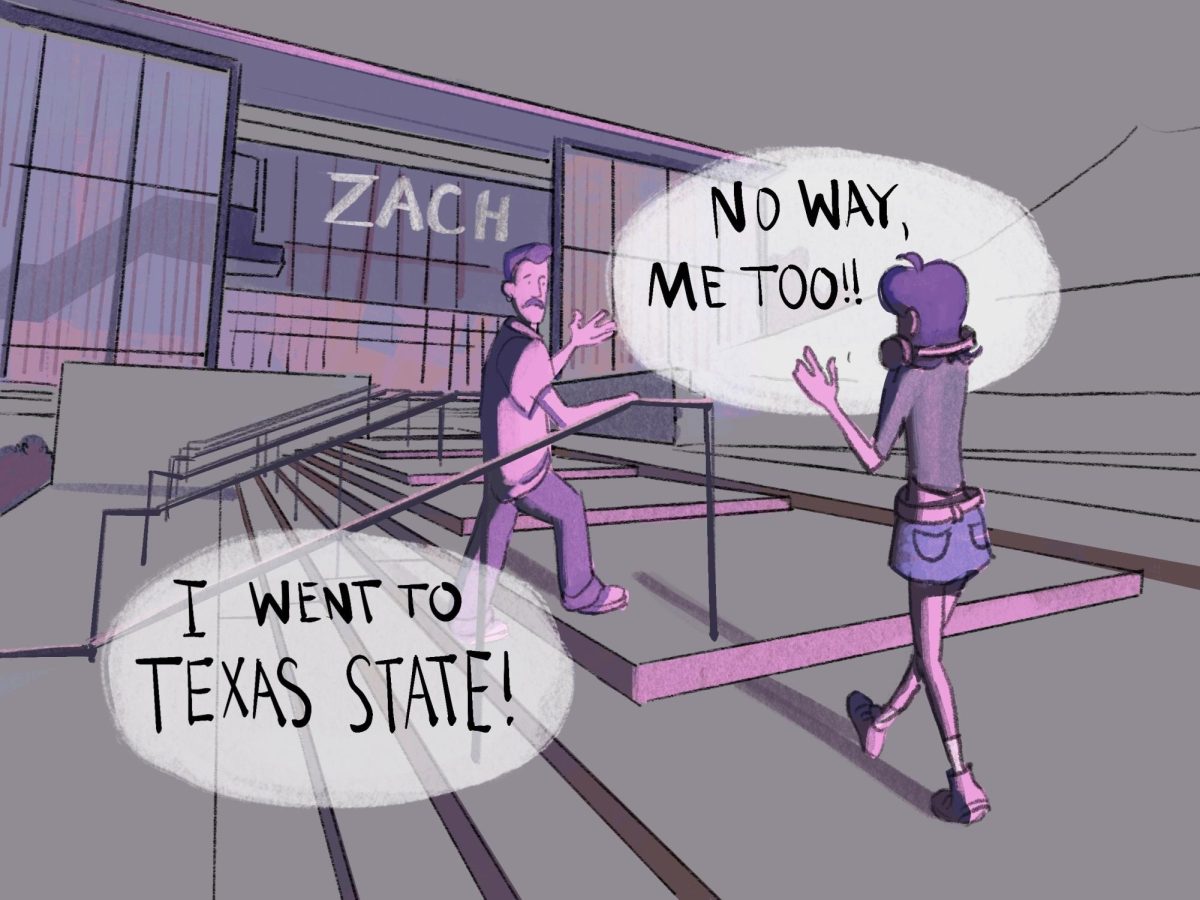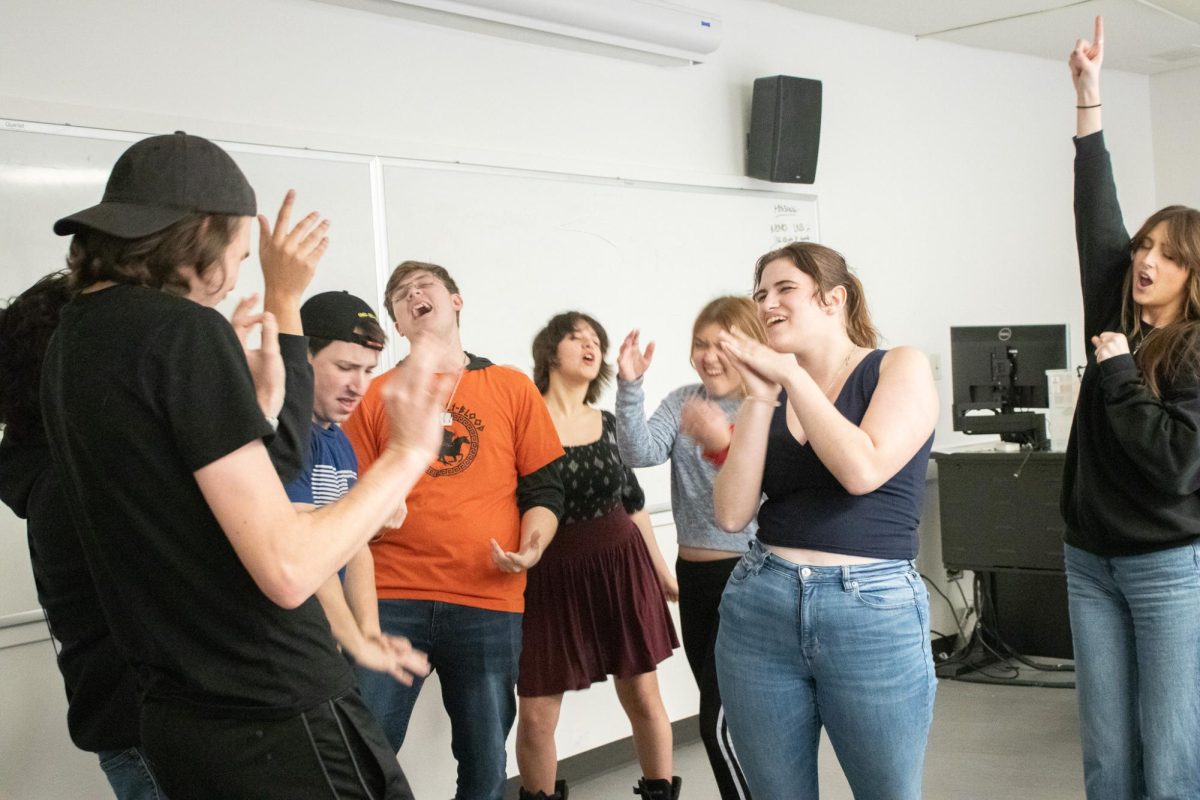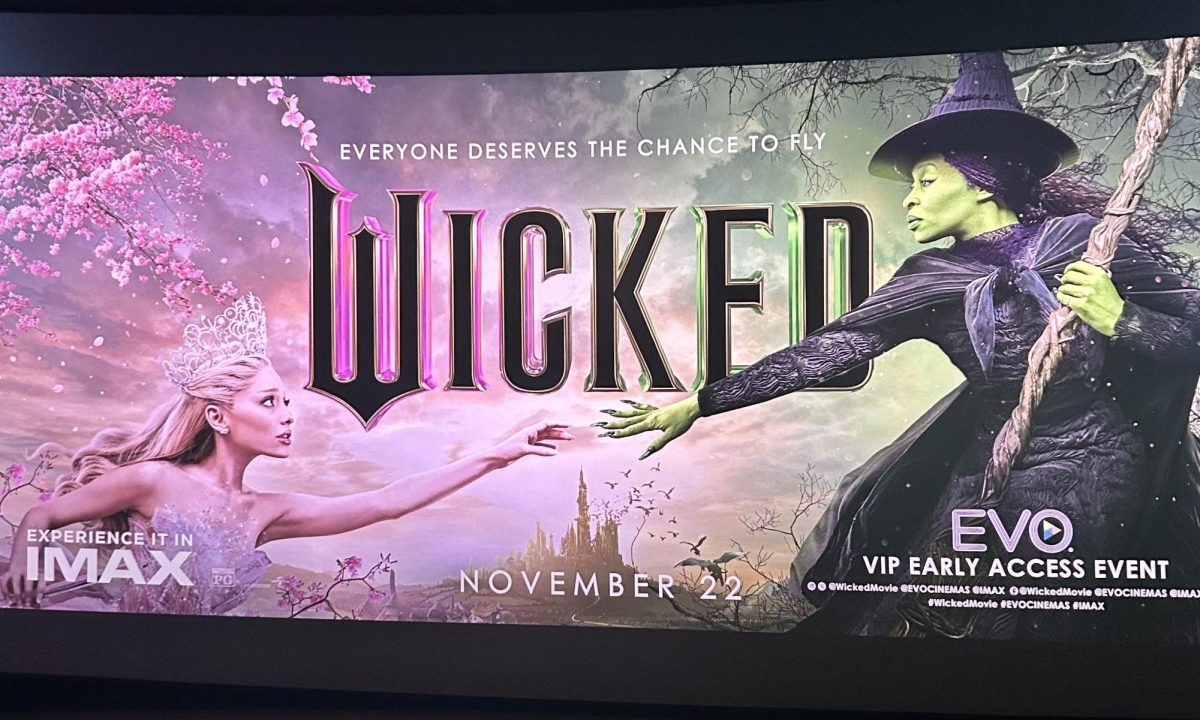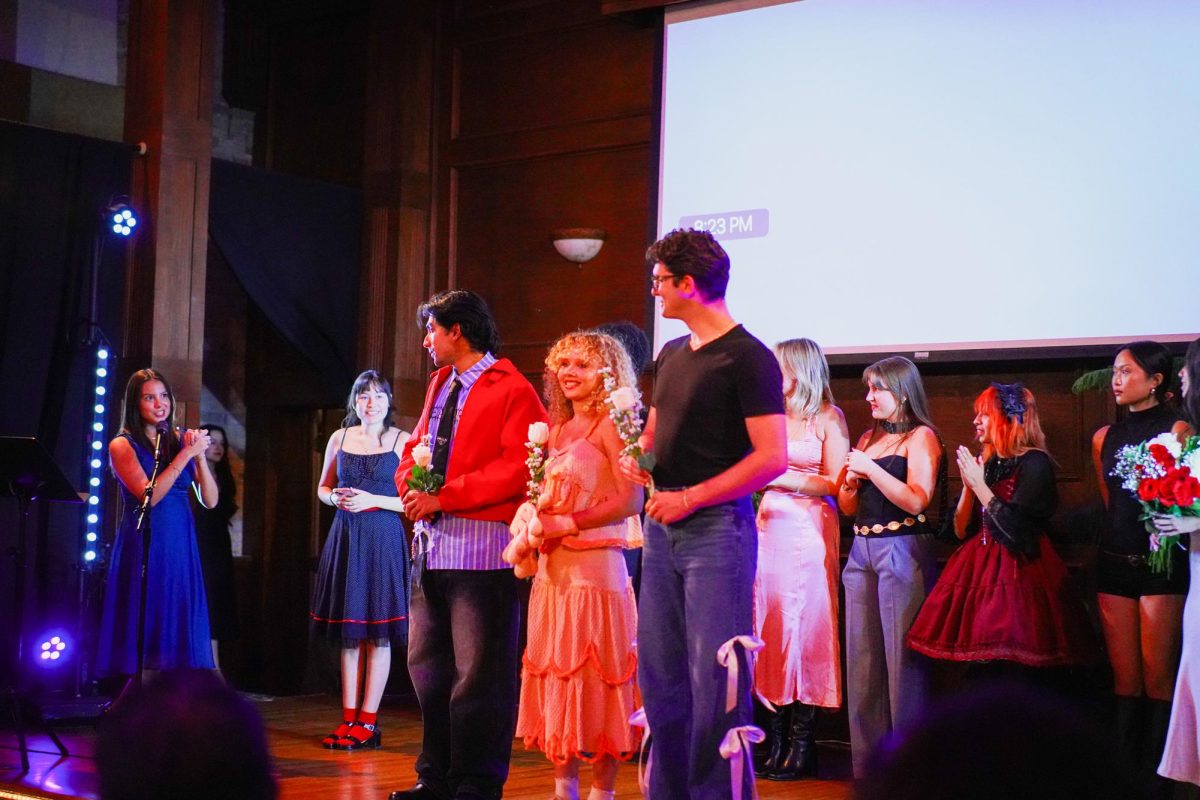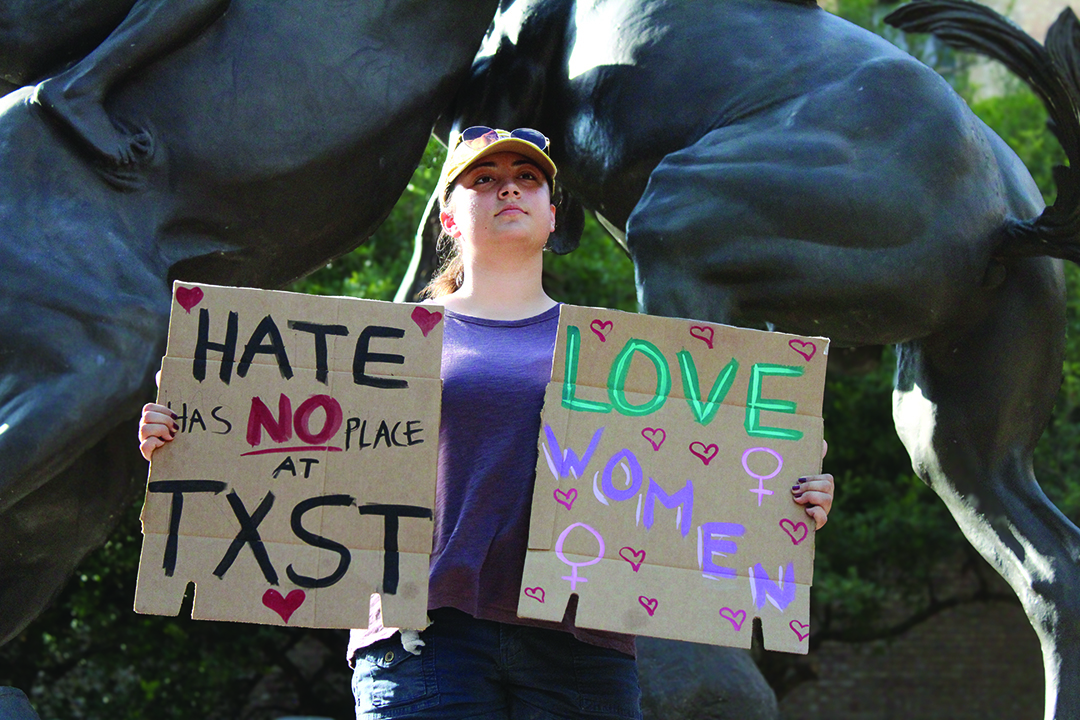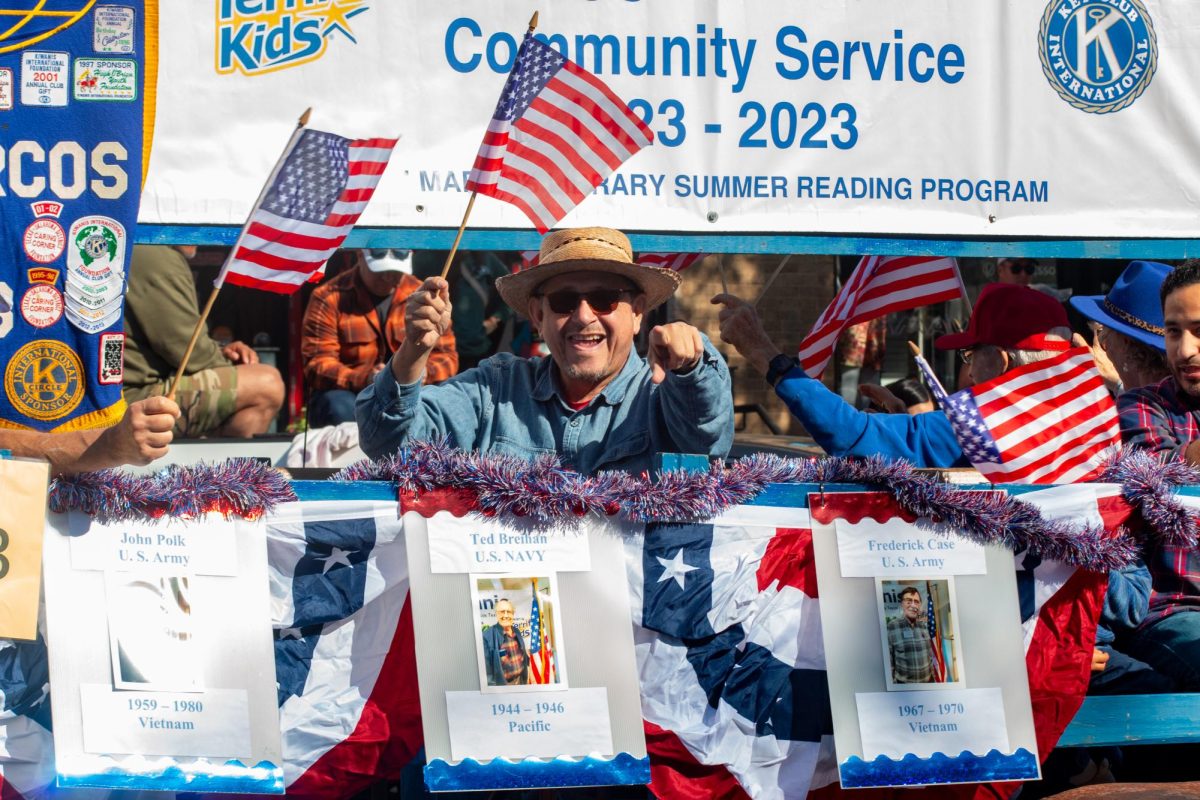Planted on the walls of San Marcos’ Price Center is a collection of personal items, photographs of Indigenous dancers, handmade beaded jewelry and original artwork honoring the Indigenous roots of San Marcos.
The collection is part of “Napakō: Our Journey,” a new exhibit curated by and for the San Marcos Indigenous Cultures Institute (ICI), an organization founded in 2006 by the Miakan-Garza Band. The ICI aims to preserve and reclaim the cultures and histories of Indigenous communities and people native to Texas and Northern Mexico.
“Napakō: Our Journey” pays homage to San Marcos’ Indigenous community and the programs the ICI has implemented, such as the annual Sacred Springs Powwow. The gallery features personal items the ICI has documented through its programming such as ceremony regalia and original beaded artwork belonging to Maria Rocha, executive director of the ICI, and Dr. Mario Garza, the ICI’s board of elder’s chair and principal founder of the institute.
“The idea behind loaning our own items is that with Indigenous people … it’s about the elders who invested their lives in this way of living, the young people who are listening and being taught by the elders and the older young people who are putting the programs together. It’s not just about the programs. It’s about our personal lives,” Rocha said.
The gallery also features original artwork and writing from a young Indigenous student who describes what it means to be Indigenous. Rocha said the institute was willing to share personal sacred items with the community so it could understand that the exhibit came from the heart and personal feelings of Indigenous people.
“It gives people a chance to look into our world and see us in our programming and see what our clothing looks like and what our jewelry looks like and some of the dances and feathers that we use. Just to go into our world and see what that’s like,” Rocha said. “And it’s so beautiful and colorful and rich, and we want to share that with people.”
The exhibit’s planning took place throughout the pandemic over Zoom meetings and phone calls. During the planning, Rocha searched her and Garza’s personal items and artwork to choose what would go on display in the exhibit. Paulina Dosal-Terminel, the ICI’s visual arts coordinator and manager of community programs at the Dallas Museum of Art, helped curate the gallery and said it was special creating a show from personal items.
“I felt like this was such an honor … for me to be able to tell this story, using their things that they’ve lived in,” Dosal-Terminel said. “I don’t know if other people like take it as seriously as we take it but, you know, these are items that are used in ceremony … so I wanted to kind of use these amazing things that they’ve made to tell that story which is their story.”
The name of the exhibit, “Napakō,” when broken down, translates into “our journey” in Coahuiltecan, the language of the original Native people of Texas. Rocha said the name embodies the Indigenous people’s holistic way of thinking and their cultural journey.
“We journey seven generations in the past, to where we are now, seven generations into the future and then on and on and on,” Rocha said. “But it’s always a journey that we all traveled together. And so that’s the concept we want to pass on to people. We’re in this world for a short time as human beings. In that journey together, we should do positive things, good things, generous things.”
Clay DeStefano, executive director of the Price Center, said this display and the center’s current and previous collaboration with the ICI helps bring independent communities together by presenting an opportunity for the city’s large community to learn about its Indigenous culture and history.
“It helps make sure their story is told accurately and professionally … if you don’t attend the powwow, you don’t see this story. You don’t know this story. And so, I felt it was important that we provided this opportunity. And I’m just thrilled that they are pleased with it as I am,” DeStefano said.
Creating “Napakō” supports the ICI’s mission to restore ancestral knowledge and Indigenous heritage, Dosal-Terminel said. Through this exhibit they intend to educate the local younger generation, especially Hispanic and Latinx youth, of the Indigenous culture as they may only see themselves as an identity that was colonized, not someone who could be mixed with European and Indigenous ancestry.
“If someone goes into that exhibit, and then it makes them question their own identity or makes them more interested in looking into their own ancestry, I think that’s a big part of this too,” Dosal-Terminel said.
Rocha, Dosal-Terminel and members of the Price Center encourage young people in San Marcos, especially the college population, to visit the exhibit so they can gain a deeper appreciation for the place they live. Rocha’s hope is that the exhibit can teach those unfamiliar with the city’s Indigenous culture about the sacredness of the place they live and have a new respect for the people whose history and heritage are rooted here.
“I think it’s important for the students that come to Texas State, to know that they are living for a couple of years, four years maybe, on sacred land. This land is considered sacred by the people who’ve been here for 14,000 years,” Rocha said. “When they go off to their jobs, or their profession, somewhere else in the country or the state, they’ll take with them, that sacred knowledge, that sacred experience … if you can think back on those foundational years of your education, one of the things was the spirit and power of this land that you were on, that will always be with you.”
“Napakō: Our Journey” will be displayed until Nov. 27 on the first floor of the Price Center located on 222 W San Antonio St. The gallery space is open free to the public Wednesday-Friday from noon to 5 p.m. and on Saturday from 10 a.m. to 3 p.m.
For more information on the Indigenous Cultures Institute visit its website.
Categories:
San Marcos Indigenous community preserves culture, history in art gallery
Sarah Hernandez, Life and Arts Editor
October 18, 2021
Dr. Mario Garza’s traditional dress along with Rene Renteria’s Sacred Springs Powwow portraits are displayed as part of the Napokō (Our Journey) exhibit, Saturday, Oct. 16, 2021, at the Price Center. The Indigenous Cultures Institute (ICI) of San Marcos created the exhibit to last from Oct. 4 to Nov. 27, and it shares the story of the Indigenous community in San Marcos.
0
Donate to The University Star
Your donation will support the student journalists of Texas State University. Your contribution will allow us to purchase equipment and cover our annual website hosting costs.
More to Discover


